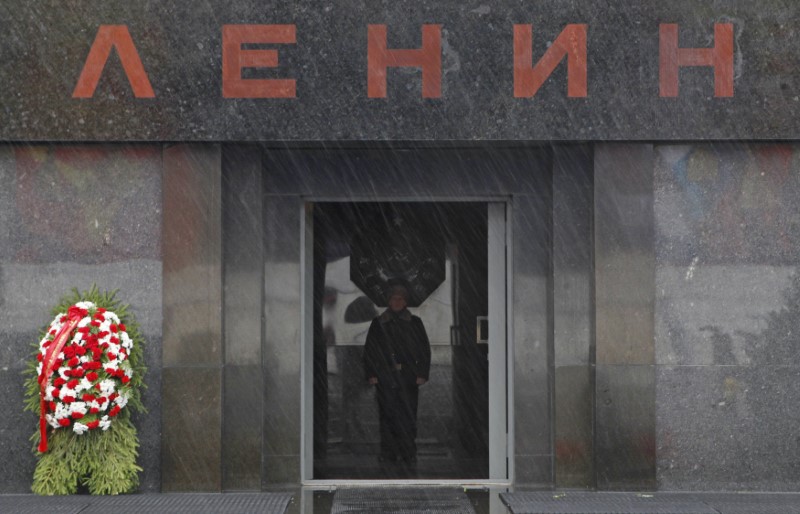Image: An honor guard is seen though the rain drops during a wreath-laying ceremony, held by supporters of the Russian Communist Party, at Vladimir Lenin’s mausoleum on the eve of the 95th anniversary of the 1917 Bolshevik revolution in Red Square in Moscow, November 6, 2012. The sign reads “Lenin”. REUTERS/Maxim Shemetov
![]()
By Andrew Osborn
MOSCOW (Reuters) – The embalmed corpse of Vladimir Lenin has lain in a mausoleum on Red Square since his death in 1924 but now, a century after the revolution he spearheaded, legislation designed to turf him out has been introduced into the Russian parliament.
The communist party, which ruled the country until the collapse of the Soviet Union in 1991, called any such move “a provocation” that could lead to mass unrest if pursued.
But the draft law’s authors — four lawmakers from the ruling United Russia party and two from a pro-Kremlin nationalist party — cited polls showing a majority opposed the presence of the corpse in the heart of the Russian capital.
Lenin’s body was originally laid out in a wooden mausoleum but this was later replaced by a granite structure, the seat of a powerful cult of personality from which generations of Soviet leaders presided over parades. The corpse, laid out in three-piece suit, is still viewed by the faithful and by curious tourists, but queues are now shorter than Soviet times.
Previous attempts to remove it have foundered amid warnings it would split society. The legislation introduced on Thursday would enforce no immediate action but remove legal impediments to it being reburied when authorities judged the time right.
Aware that the issue has the potential to stir up strong feelings, among communist supporters and those who saw him as a ruthless dictator, the legislators said they were not acting for political reasons; but critics noted they had introduced the law two days before Lenin’s birthday, April 22, and a century after the 1917 revolution that brought the Bolsheviks to power.
“(We are) not suggesting that a historical analysis of the events associated with the burial of Lenin be conducted or trying to argue for the necessity of reburying the remains because of an assessment of his role in state history,” the lawmakers wrote in a note explaining the legislation.
Lenin died of a stroke in 1924 and is said to have wanted to be buried alongside his mother in St Petersburg’s Volkovskoye Cemetery, resting place of writers, intellectuals and academics.
(Editing by Ralph Boulton)
Copyright 2017 Thomson Reuters. Click for Restrictions.


